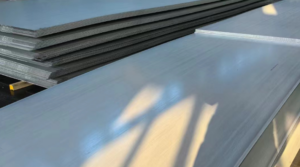High-speed steel and cemented carbide steel, both being outstanding tool materials, are frequently utilized in the manufacturing of cutting tools, dies, and other applications. However, they differ significantly in composition, properties, and applications. In this article, we will take a closer look at the major differences between high-speed steel and cemented carbide steel.

6 Major Differences between High-speed Steel and Cemented Carbide Steel:
Firstly, in terms of material composition, high-speed steel primarily consists of tungsten, molybdenum, chromium, vanadium, and other elements, imparting it with a balance of hardness and toughness. In contrast, cemented carbide steel is dominated by tungsten, cobalt, and contains a higher proportion of carbon, which contributes to its unique properties.
Secondly, concerning hardness, while high-speed steel exhibits a relatively high level of hardness, cemented carbide steel generally surpasses it. This is attributed to the inclusion of more hard phases, such as tungsten carbide, in cemented carbide steel, whose crystalline structure and chemical composition enable it to achieve a higher hardness value.
Furthermore, the difference in hardness also translates into varying wear resistance. Although high-speed steel possesses significant hardness, cemented carbide steel demonstrates superior wear resistance under extremely demanding processing and wear conditions.
In terms of machinability, the distinct compositions of these two materials lead to different performance profiles. Broadly speaking, high-speed steel is suitable for low-speed, high-impact cutting conditions, whereas cemented carbide steel excels in high-speed, precision cutting applications.
Additionally, there exists a notable difference in heat resistance. Cemented carbide steel boasts superior thermal stability, maintaining its hardness and performance at higher temperatures. Typically, it retains good hardness and cutting performance at temperatures ranging from 800°C to 1000°C or even higher. In contrast, the hardness and cutting ability of high-speed steel significantly decline beyond 600°C.
Lastly, these differences in properties translate into distinct application areas. High-speed steel, with its high hardness and wear resistance, is commonly used in the production of drills, taps, milling cutters, and other tools. On the other hand, cemented carbide steel, with its even more outstanding hardness and wear resistance, is ideal for manufacturing higher-demand cutting tools such as turning tools and boring bars.
Conclusion
In conclusion, the variations in composition, hardness, machinability, and heat resistance between high-speed steel and cemented carbide steel determine their distinct roles in various industrial applications. Therefore, selecting the appropriate material for a specific application, based on the processing conditions and requirements, is crucial to achieving optimal results.
Why Choose Sino Special Metal?
Thank you for reading our article and we hope it can help you to have a better understanding of the major differences between high-speed steel and cemented carbide steel. If you are looking for high-speed steel suppliers and manufacturers online now, we would advise you to visit Sino Special Metal for more information.
As a leading supplier of high-speed steel from Shanghai China, Sino Special Metal offers customers high-quality high-speed steel products such as M2 High-Speed Steel, M35 High-Speed Steel, and M42 High-Speed Steel at a very competitive price.




